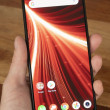Spectrum
In wireless, this refers to the radio portion of the electromagnetic spectrum. The radio spectrum spans a certain, limited frequency range. Multiple signals can be transmitted simultaneously on different frequencies. But if the frequencies are the same, or even too close, the signals interfere with each other.
Furthermore, radio signals spread out and fade over geographic distance. So while two radio transmitters on the same frequency, in the same city, might interfere with each other - if they were in different cities, they would not interfere. Weaker transmitters, such as cordless phones, can remain separate, at the same frequency, at much shorter distances.
The range of frequencies is fixed and limited, being determined by physics of the universe. The range of frequencies with properties useful for cell phones is smaller still. Therefore, in the US, the FCC (Federal Communications Commission) governs the allocation of these frequencies. The FCC ensures that any two transmitters in one area and frequency won't overlap and interfere. This is called spectrum allocation. Sometimes spectrum is sold to companies via auction, in the form of an exclusive license to use a specific range of frequencies in a defined geographic area.
Sections of spectrum are called "bands". The portions of spectrum set aside for wireless mobile phone service are split into two bands. The first is Cellular, which is centered roughly around 800 MHz. The second is PCS, which is centered roughly around 1900 MHz.
Each of these bands are further subdivided into blocks, and these blocks are then licensed to individual wireless carrier companies.



